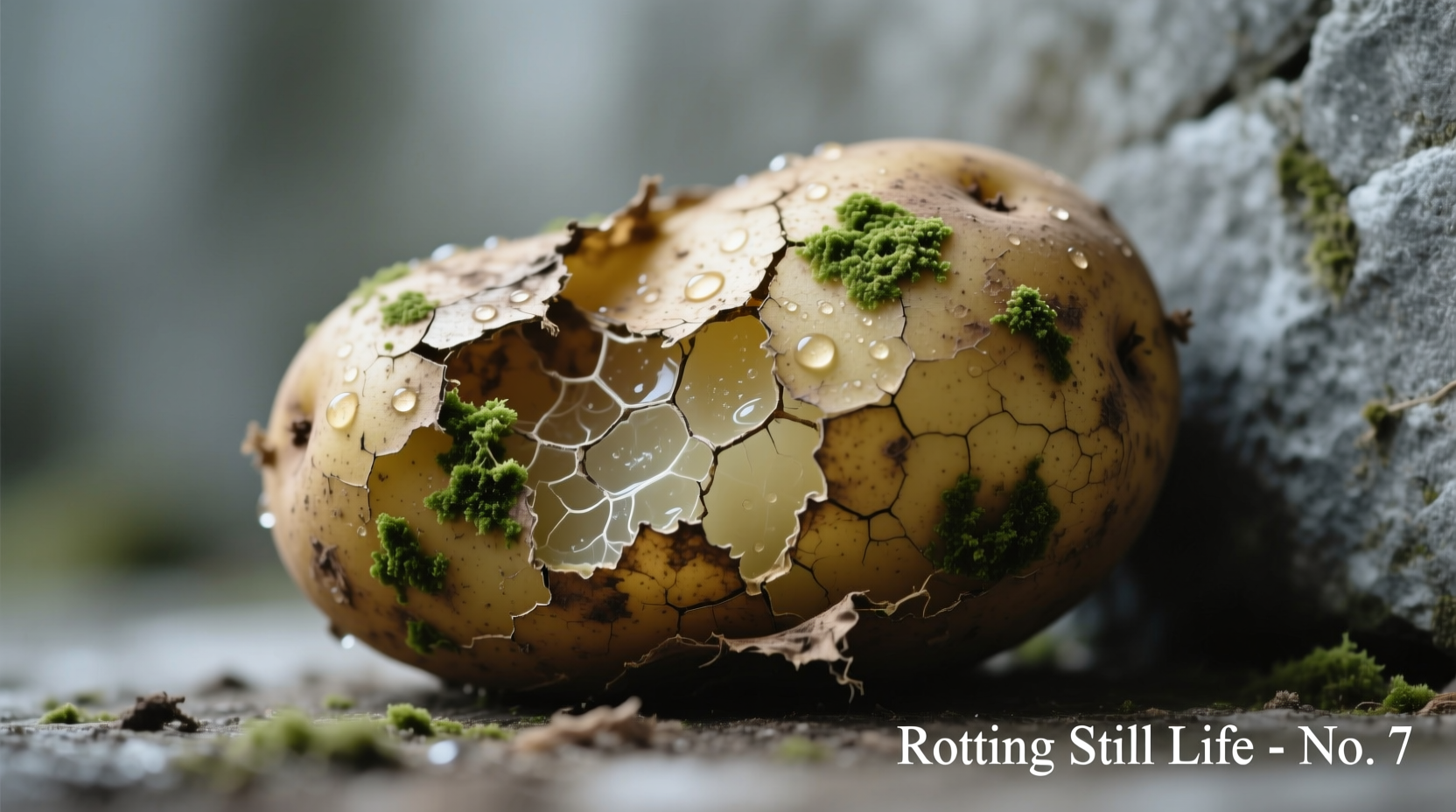Understanding Potato Spoilage: Safety First
When you encounter a potato showing signs of decay, your immediate concern should be safety. Potatoes contain naturally occurring compounds called glycoalkaloids, primarily solanine and chaconine, which increase significantly as potatoes spoil. Consuming high levels of these compounds can cause nausea, vomiting, diarrhea, headaches, and in severe cases, neurological problems.
| Condition | Safety Status | Recommended Action |
|---|---|---|
| Firm with minor surface blemishes | Safe to eat | Cut away affected areas (1/4 inch around) |
| Green patches (exposed to light) | Potentially unsafe | Remove all green areas completely |
| Soft spots deeper than 1/4 inch | Unsafe | Discard entire potato |
| Visible mold or slimy texture | Dangerous | Discard immediately, do not touch mold |
How Potato Spoilage Develops: A Timeline
Understanding the progression of potato spoilage helps you identify when intervention is possible and when disposal is necessary. According to the USDA Agricultural Research Service, potato deterioration follows this typical pattern:
- Days 1-7: Initial moisture loss, slight skin wrinkling, possible sprouting begins
- Days 7-14: Surface blemishes appear, green discoloration from light exposure, minor soft spots develop
- Days 14-21: Significant softening, deeper decay, possible mold formation at damaged areas
- Days 21-28: Advanced rot, foul odor, slimy texture, extensive mold growth

When Slightly Imperfect Potatoes Are Still Safe
Not all imperfect potatoes need immediate disposal. The FDA Food Code specifies that produce with minor surface damage can often be salvaged through proper preparation:
- Sprouts: Small sprouts (under 1/2 inch) can be removed safely; potatoes remain edible if firm
- Green patches: Caused by light exposure producing solanine; cut away all green areas plus 1/4 inch around
- Surface blemishes: Superficial scabs or minor cuts can be trimmed away
However, the FDA Food Code 2022 clearly states that produce with "extensive mold growth, slimy texture, or foul odor" must be discarded immediately due to potential mycotoxin contamination.
Proper Potato Storage: Extending Freshness
Maximizing your potatoes' shelf life begins with proper storage techniques. Research from the University of Idaho's Potato Research and Education Center shows that optimal storage conditions significantly delay spoilage:
- Temperature: 45-50°F (7-10°C) is ideal; never refrigerate as cold temperatures convert starch to sugar
- Humidity: 90-95% relative humidity prevents moisture loss
- Ventilation: Allow air circulation in breathable containers like paper bags or wicker baskets
- Light: Complete darkness prevents greening and solanine production
- Separation: Store away from onions which emit gases that accelerate sprouting
Safe Disposal of Rotten Potatoes
When potatoes have spoiled beyond salvage, proper disposal prevents cross-contamination and environmental issues:
- Wear gloves when handling moldy potatoes to avoid skin contact with mycotoxins
- Place spoiled potatoes in sealed plastic bags before discarding
- Do not compost potatoes showing mold or advanced rot due to potential pathogen spread
- Wash hands thoroughly and disinfect any surfaces that contacted spoiled potatoes
The CDC's food safety guidelines emphasize that proper hand hygiene after handling spoiled produce reduces risk of transferring pathogens to other foods or surfaces.
Preventing Potato Waste: Practical Strategies
Reducing potato spoilage saves money and minimizes food waste. Implement these evidence-based strategies:
- Inspect potatoes before purchase for bruises, cuts, or soft spots
- Store only undamaged potatoes; damaged ones should be used first
- Rotate stock using the "first in, first out" principle
- Consider purchasing smaller quantities more frequently if you don't use potatoes quickly
- Learn proper cooking techniques that use potatoes before they spoil
When in Doubt, Throw It Out
Food safety experts consistently emphasize that when you're uncertain about a potato's condition, the safest choice is disposal. The potential health risks from consuming significantly spoiled potatoes far outweigh the cost of replacement. Remember that some spoilage indicators aren't visible to the naked eye, and harmful compounds may be present even when the potato appears mostly normal.











 浙公网安备
33010002000092号
浙公网安备
33010002000092号 浙B2-20120091-4
浙B2-20120091-4